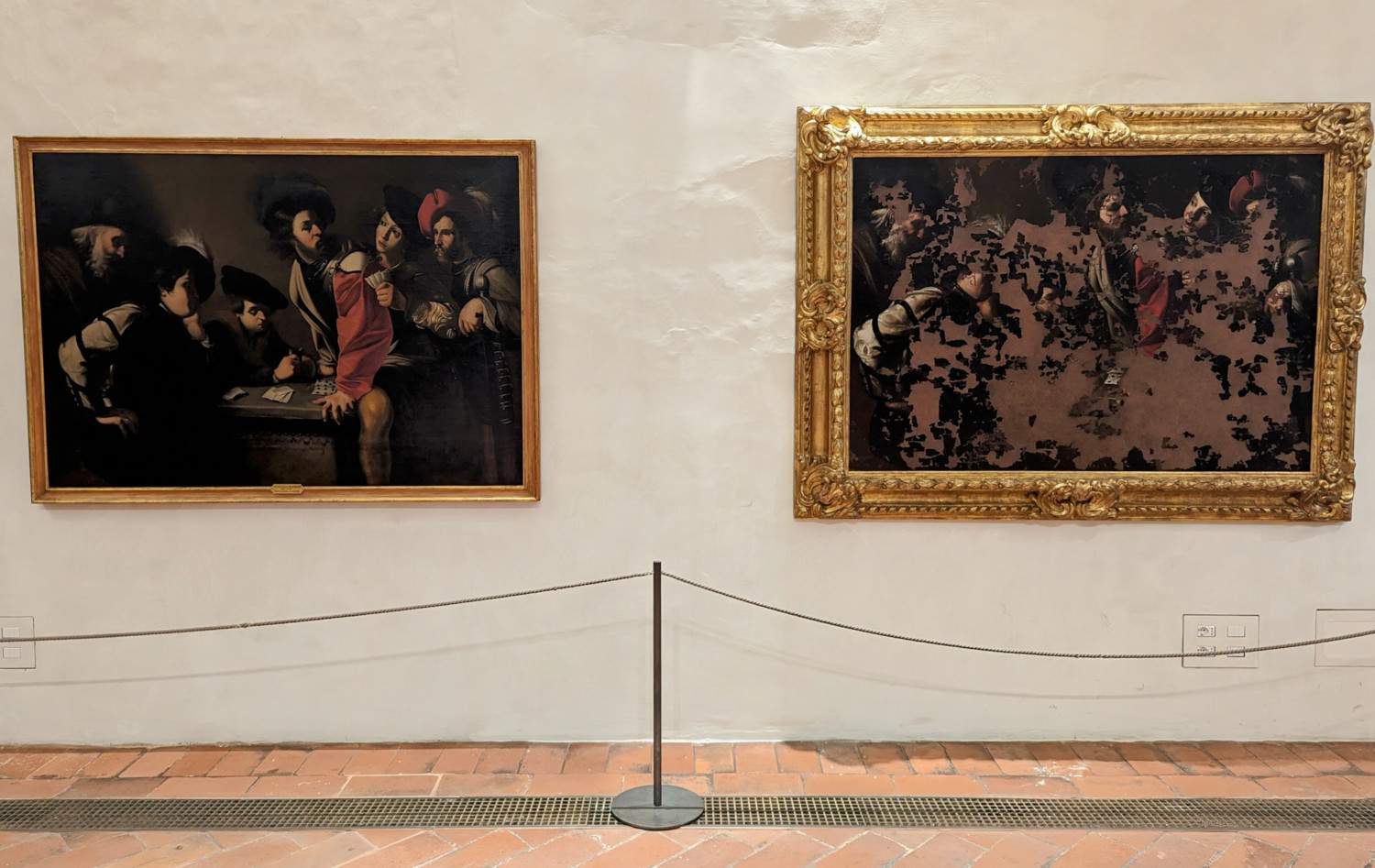On the 31st anniversary of the Georgofili Massacre, two masterpieces “brought back to life” from destruction will be the protagonists of an exhibition-monitory at the Uffizi Galleries: these are the large canvases of the Concert and the Card Players, which bear the signature of seventeenth-century Caravaggio painter Bartolomeo Manfredi. The paintings will be the focus of the exhibition, along with their period copies (the study and observation of which were essential to enable their restoration).
The Concert was the first work to undergo surgery and partially recovered as early as a few months after the massacre, in 1993. The Players, on the other hand, was the last, with a special operation carried out just to mark the anniversary of the massacre in 2018. Both paintings were located (along with the other great masterpiece damaged by the bomb, fortunately also restored during the 1990s, The Adoration of the Child by Gherardo delle Notti), along the staircase leading to the Vasari Corridor: the impact of the explosion of the 277 kilos of TNT was such that it destroyed large portions of the outer wall and almost completely disintegrated the paintings themselves. But in the hours following the bombing, with painstaking patience, thousands of fragments of the canvases were collected, catalogued and carefully set aside: they were later used to go on to restore and reassemble, like a puzzle, the partial integrity of the masterpieces destroyed by the Mafia.
The exhibition will be on view from May 26 to July 28, 2024, on the ground floor of the Gallery, in a large room at the beginning of the tour route. Accompanying it will be the screening of a video documentary with period testimonies of the firefighters who provided first aid, and the museum workers who intervened on the very night of the bombing to try to limit the damage done by the explosion.
“Remembering the very serious Mafia bombing of 1993 is a civic duty of everyone, starting with the museum that was a victim of that bombing, along with five innocent people,” said Uffizi director Simone Verde. “That is why as soon as they enter the Gallery, all visitors, even those who never knew what happened in 1993, will be able to learn about it thanks to this exhibition. Not only that. Exhibiting the two masterpieces wrested from the devastation of what was undoubtedly one of the darkest chapters in Republican history instills in the viewer a message of strong civic determination for the future.”
Bartolomeo Manfredi (Ostiano, 1582 - Rome, 1622), a painter from Lombardy, was a follower of Caravaggio, his countryman, becoming his most famous popularizer of the style among northern European artists. The historiographer and collector Giulio Mancini, included him fully in Caravaggio’s “schola”; the Medici, far-sighted collectors, immediately appreciated Manfredi, who, during one of his stays in Florence, was highly praised by the Accademia delle Arti del Disegno. The two genre scenes housed in the Uffizi collection, Concert and Card Players, both dated between 1617 and 1618, are considered among the best fruits of the artist’s labor, as well as considered to be of fundamental artistic historical importance even in light of the small number of his works that have come down to the present day.
 |
| At the Uffizi an exhibition-monitory to remember the Georgofili Massacre with Bartolomeo Manfredi's two masterpieces |
Warning: the translation into English of the original Italian article was created using automatic tools. We undertake to review all articles, but we do not guarantee the total absence of inaccuracies in the translation due to the program. You can find the original by clicking on the ITA button. If you find any mistake,please contact us.